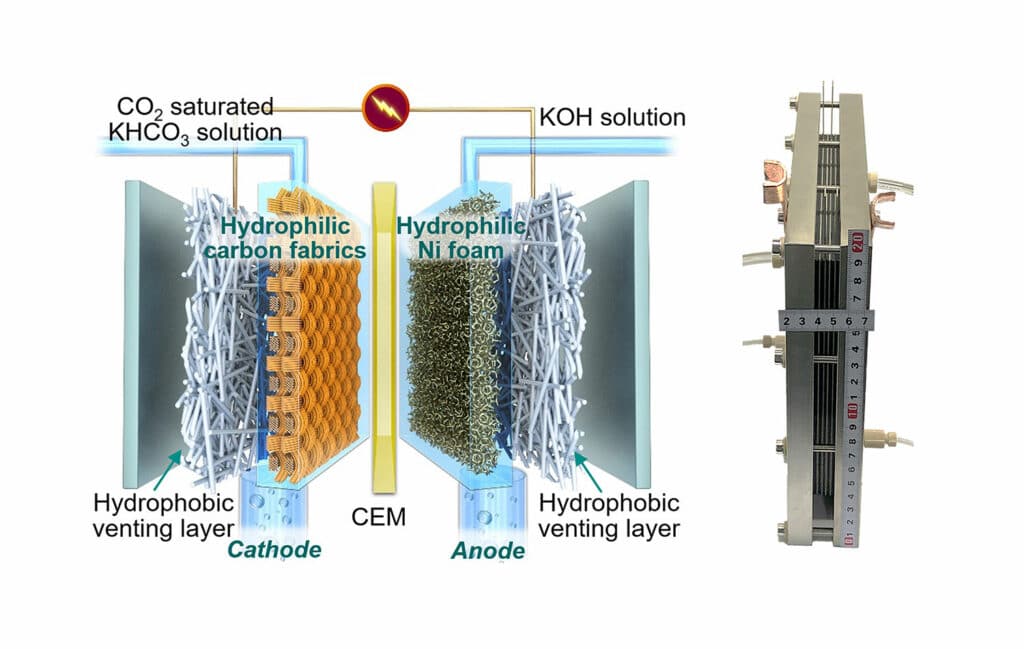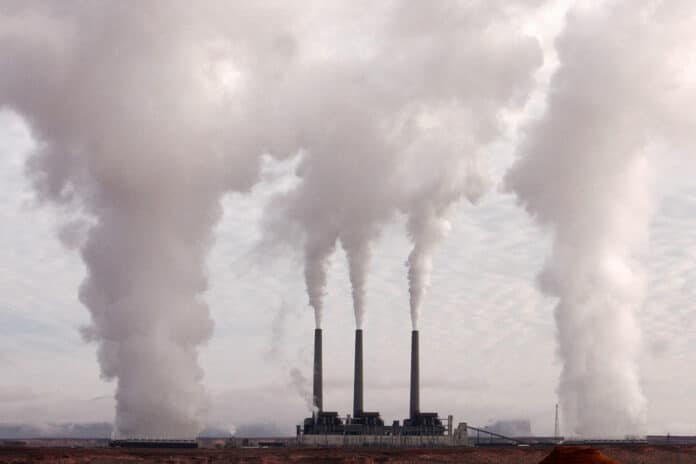Carbon dioxide emissions are the primary driver of global climate change. Now, a team of researchers from the University of Waterloo has developed a new technology that could make a significant difference in the fight against climate change. The technology converts harmful carbon dioxide (CO2) into fuels and other valuable chemicals on an industrial scale.
According to the researchers, the system yields 10 times more carbon monoxide (CO) – which can be used to make ethanol, methane, and other desirable substances – than existing, small-scale technologies now limited to testing in laboratories.
Its individual cells can also be stacked to form reactors of any size, making the technology a customizable, economically viable solution that could be installed right on site, for example, at factories with CO2 emissions. The new system features electrolyzers that convert CO2 into CO using water and electricity.

The electrolyzers developed by the researchers have new electrodes and a new kind of liquid-based electrolyte, which is saturated with CO2 and flowed through the devices for conversion into CO via an electrochemical reaction. Their electrolyzers are essentially 10-centimeter by 10-centimeter cells, many times larger than existing devices, that can be stacked and configured in reactors of any size.
“This is a completely new model for a CO2 reactor,” said Dr. Zhongwei Chen, a chemical engineering professor at Waterloo. “It makes the whole process economically viable for industrialization and can be customized to meet specific requirements.”
The team envisions on-site reactors at coal-fired power plants and factories, perhaps the size of a house or more, that would be directly fed CO2 emissions. This could further reduce costs by eliminating the need to capture and collect CO2 first. Researchers are also developing plans to power the reactors with on-site renewable energy sources such as solar panels, contributing to the environmental benefits.
“I’m excited by the potential of this technology,” Chen said. “If we really want to make a difference by reducing emissions, we have to concentrate on reducing costs to make it affordable.
Journal reference:
- Guobin Wen, Bohua Ren, Xin Wang, Dan Luo, Haozhen Dou, Yun Zheng, Rui Gao, Jeff Gostick, Aiping Yu and Zhongwei Chen. Continuous CO2 electrolysis using a CO2 exsolution-induced flow cell. Nature Energy, 2022 DOI: 10.1038/s41560-022-01130-6
